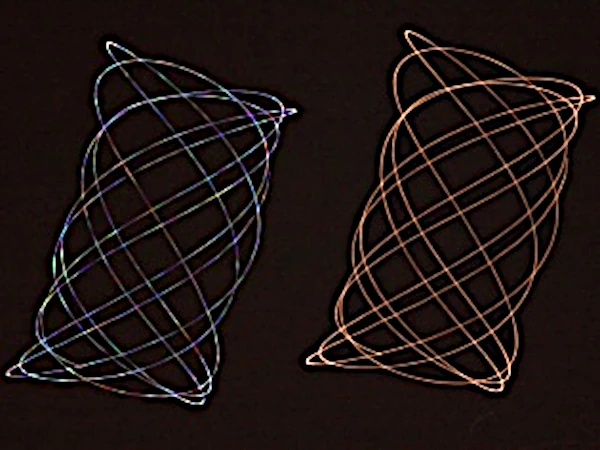
When observing the night sky, we distinguish two types of lights: some twinkle vividly, others shine steadily. This phenomenon is due to atmospheric turbulence. Stars, being very distant, are seen as point sources, while planets, being closer, present a small apparent disk. This difference is crucial.
The atmosphere is not homogeneous. It is composed of air cells with varying temperature, pressure, and humidity. These differences create gradients in the refractive index. When a light beam passes through these moving cells, it is randomly deflected (multiple refraction). This agitation alters the apparent direction of the light coming from the stars: this is what we perceive as twinkling.
The light from a star arrives as a narrow beam, affected by each atmospheric layer. The light from a planet, on the other hand, comes from a small disk (a few arcseconds), composed of many rays from different zones of the disk. The fluctuations due to turbulence are statistically compensated. Result: the light signal is smoothed, and the light appears stable.
The closest stars have an apparent diameter on the order of a few milliseconds of arc. Planets like Venus or Jupiter can reach 10 to 50 arcseconds, or up to 1000 times larger visually. This larger diameter makes all the difference in how the light is processed by the atmosphere. It is an effect of geometric optics.
The closer a star is to the horizon, the more layers of air its light passes through, and the more it twinkles. This phenomenon is accentuated in cities due to thermal instability. On the other hand, at high altitudes (astronomical observatories), turbulence is less, and stars appear more stable.
| Characteristic | Stars | Planets | Visual consequence |
|---|---|---|---|
| Distance to Earth | Light-years | From 40 million to 1.5 billion km | Point of light vs visible disk |
| Apparent diameter | < 0.01" | Up to 50" | Point source vs extended |
| Effect of turbulence | Very marked | Attenuated | Twinkling vs stability |
| Optical compensation | None | Yes (spatial average) | Unstable signal vs smoothed signal |
References: ESO – Why do stars twinkle, NASA Night Sky Network, Sky & Telescope.
The twinkling of stars is not due to their nature, but to how their light interacts with the Earth's atmosphere. It is a precise physical phenomenon, revealing the limits of our vision from the ground. Planets, being closer, escape this illusion thanks to their larger apparent size. A simple look up at the sky thus already allows distinguishing a star from a planet.